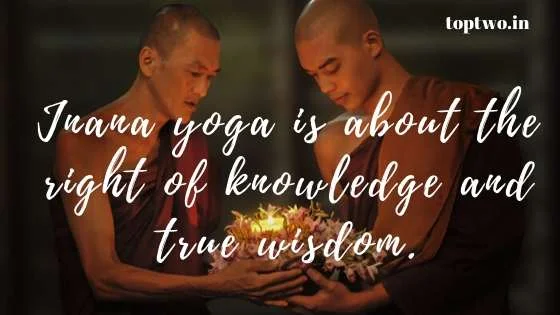Yoga background and Types of yoga.
Introduction.
One of the best things about yoga is that it is easy on the body. Anyone, of any fitness level, age or gender can do it. Even those with previous injuries or physical ailments can do yoga. You have the ability to start out slowly performing some of the easier positions and then work your way up to the more difficult stances. For those who are very fit, some yoga offers a much more intensive workout, so there is definitely something for everyone.
How many types of yoga are there?
Contrary to popular belief yoga is not simply one set of poses. There is much more to it than that and a wide variety of different yoga styles that you can choose from, although in the West, the practice is normally referred to as yoga, as Western instructors normally combine a few of the methods and create their own unique styles of yoga to suit their goals.
Traditionally, there are 6 different types of yoga that are practiced around the world, but 7 if you include the new form, Bikram, which has been widely commercialized and is extremely popular.
- 1. Hatha
- 2. Raja
- 3. Karma
- 4. Bhakti
- 5. Jnana
- 6. Tantra
- 7. Bikram
So let's go into more detail about each type of yoga and what it involves:
Hatha Yoga
Hatha (meaning sun) is the most commonly practiced form of yoga in the Western hemisphere with two important principles that are promoted:
• Meditation
• Improving Energy Within the Body
The meditation includes finding a position that is the most comfortable for you and as you gain strength and become more advanced you will find the one that is best for you. Most people go with the lotus position. The lotus position is done seated with your legs crossed and intertwined. The left foot is over the right thigh and the right foot is over the left thigh.
Improving energy within the body is done using various poses and focusing on the light energy that travels through your body. It is about bringing positivity and healing into your body.
Raja Yoga
Raja (royal) is slightly more difficult than Hatha, but similar, and requires more control and self discipline, as it aims to achieve awakening and enlightenment. It is also known as Classical yoga or Ashtanga yoga and focuses on the principles of meditation, concentration, and mind/body discipline. As per the eightfold path to enlightenment teachings, there are 8 limbs, or parts, to Raja yoga:
- 1. Moral discipline
- 2. Self restraint
- 3. Concentration
- 4. Meditation
- 5. Breath control
- 6. Posture
- 7. Sensory inhibition
- 8. Ecstasy
Raja yoga aims to control thought waves and calm the mind, allowing you to eventually achieve self awareness.
Karma Yoga

Karma (discipline of action) is generally referred to in the sense of doing good or bad to others will result in the same thing happening to you. In yoga terms, Karma means a selfless action and to perform this kind of yoga, you are supposed to surrender yourself and serve humanity and mankind selflessly.
Karma yoga is based in Hinduism and was founded by Bhagavad Vita. The main aim of this type of yoga is to purify the mind and heart, getting rid of negative energy and negative thinking. The important aspect of Karma yoga that you must understand is that you will learn to have no attachment to the results of your actions, as this will lead you to freedom of fear and sorrow.
Karma yoga as you can see is more spiritually based than physically and there are no specific poses that are linked to this type, but it is more about using the best postures that you are comfortable with, therefore they tend to be simpler.
Bhakti Yoga
Bhakti is about divine love and faith, and is a more spiritual type of yoga, where the person devotes time to all living things including humans, offering forgiveness and practicing tolerance. It is very similar to Karma yoga. The forms of love that this type of yoga focuses on are:
- 1. Material love
- 2. Human love
- 3. Spiritual love
Bhakti movements originate in Hindu scriptures and there are 9 principles that are followed which are:
- 1. Srvana (Listening)
- 2. Kirtana (Praising)
- 3. Smarana (Remembering)
- 4. Pada-Sevana (Rendering Service)
- 5. Arcana (Worshiping)
- 6. Vandana (Paying homage)
- 7. Dasya (Servitude)
- 8. Sakhya (Friendship)
- 9. Atma-Nivedana (Surrender to Self)
Bhakti yoga follows more meditation rather than physical poses.
Jnana Yoga
Jnana, also called Gyana yoga, is a Hindu philosophy all about the right of knowledge and true wisdom. It focuses on clearing the mind and releasing negative energy from the body and mind. Through this type of yoga you take the path to enlightenment
Jnana can be followed along with all other paths of yoga and starts from the experiences that everyone has, allowing you contemplate deeply in order to realize the truth.
Jnana yoga focuses on uses three main points or principles which are:
- 1. Viveka (the path to self realization)
- 2. Neti-Neti (removal of false ego and materialism)
- 3. Vicara (Final understanding of self realization)
These principles allow the yogi to follow the correct process to gain the real knowledge or truth about themselves and their lives. This is also more meditative than physical.
Tantra Yoga
Tantra (expansion) is the one type that most people are curious about as it focuses on erotic sensuality and sexual well being. It teaches enlightenment through transcending oneself using a system of rituals. It is about becoming aware of your body and expanding your mind so that you can gain access to all levels of consciousness. The various rituals that are practiced bring out both the female and male aspects in each person and this is said to be the only way to awaken the spirit deep within.
While sex is one of the rituals, it is not the main part of tantra yoga. Some practitioners even suggest a life of celibacy.
There are tantra yoga poses for couples to do together to enhance their sexuality and gain a special type of connectedness in their relationship, but it can also be done individually which is actually called Kundalini yoga.
Tantra poses are similar to the traditional ones like downward dog and warrior, but they require relaxation and the ability to push oneself and expand further. The pelvic tilt, the yab-yum, and Hercules are other common Tantra yoga poses.
This form of yoga is great for both physical and mental awareness.
Bikram Yoga

Bikram yoga was not included in the traditional 6 forms that are usually talked about, as it is a relatively new form of yoga, but well worth mentioning as its popularity as soared. It is also called Hot Yoga.
It was developed by Bikram Choudhury with 26 postures and 2 forms of breathing exercises. This type of yoga is done in a very hot room where the temperature is roughly 40 degrees Celsius or 105 degrees Fahrenheit.
This form of yoga is more physical and is about detoxifying the body through excessive sweating whilst toning and building strength. The added warmth also helps the body's flexibility and encourages muscle pliability therefore reducing injury, strains, and also relieves tension.
 PTWO.IN
PTWO.IN








No comments:
Post a Comment
Welcome to our community! Your thoughts matter, and we'd love to hear from you. Share your insights, experiences, or simply say hello in the comments below. Let's create a space where ideas flourish, and conversations thrive. Your input is invaluable, and we look forward to building a vibrant dialogue together!